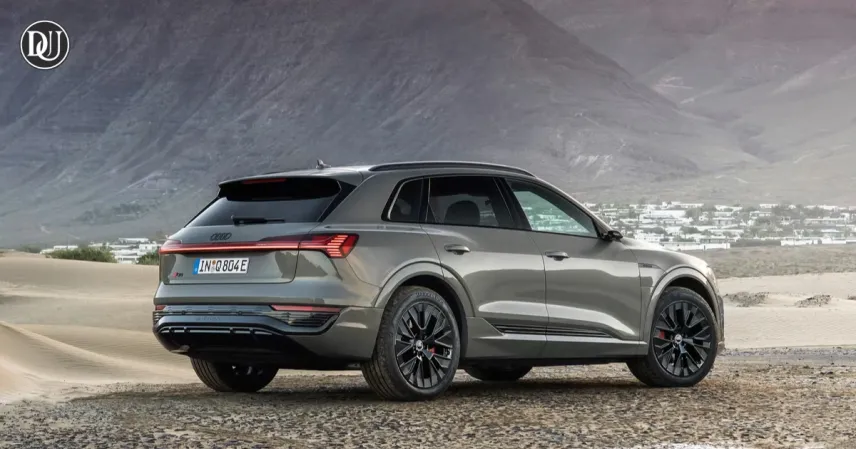Audi’s bold entry into the electric SUV market is reaching a close. The company has confirmed that production of the Q8 e-tron, its flagship luxury EV, will officially end on February 28, 2025. This move comes as part of a broader strategic realignment, aligning Audi’s future EV offerings with more advanced technologies and shifting market demand.
🏭 Production Shutdown at Brussels Plant
The Q8 e-tron has been assembled exclusively at Audi’s Brussels facility, a site once at the forefront of the automaker’s electric ambitions. However, the plant has faced rising operational costs and persistent inefficiencies. Attempts to offload the facility or retool it for newer platforms failed to gain traction, leading Audi to make the difficult decision to close operations altogether.
📉 Why Audi Pulled the Plug
Several key factors contributed to the discontinuation of the Q8 e-tron:
1. Declining Market Demand
Though once a high-profile player in the EV market, the Q8 e-tron has struggled to maintain sales momentum. Consumer preferences are shifting toward smaller, more affordable electric SUVs that offer higher efficiency and faster charging — areas where the Q8 e-tron fell behind competitors.
2. Outdated Platform Technology
The Q8 e-tron was built on the MLB Evo platform, originally designed for internal combustion engine vehicles. While adapted for electric use, this platform imposed limits on battery efficiency, range, and interior packaging — especially when compared to newer dedicated EV platforms.
3. Cost-Effectiveness and Scalability
In an increasingly competitive EV market, automakers need to produce vehicles efficiently and at scale. The Q8 e-tron, being a large luxury SUV produced in a high-cost facility, became less viable as Audi recalibrated its production priorities.
🔄 What Comes Next: Audi’s Electric Future
Audi is not abandoning the premium electric SUV segment — quite the opposite. A successor to the Q8 e-tron is already in the pipeline, this time based on the Premium Platform Electric (PPE) architecture. Co-developed with Porsche, the PPE platform underpins the upcoming Q6 e-tron and promises:
-
Greater energy efficiency
-
Longer driving ranges
-
Faster charging times
-
More spacious, tech-centric interiors
The future model is expected to push Audi further into the software-defined car era, with improvements not only in performance but also in digital user experience, over-the-air updates, and autonomous driving capabilities.
⚙️ A Quick Look at Q8 e-tron Specifications
| Variant | Power Output | Battery Capacity | EPA Range (Approx.) |
|---|---|---|---|
| Q8 50 e-tron | 183 kW | 95 kWh | ~285 miles |
| Q8 55 e-tron | 220 kW | 114 kWh | ~300 miles |
| SQ8 e-tron | 370 kW | 114 kWh | ~285 miles |
Despite respectable numbers, these figures were outpaced by competitors offering better performance and efficiency at similar or lower price points — making it harder for Audi to justify ongoing investment.
🚘 A Timeline of Legacy and Innovation
Since its launch in 2018, the e-tron (renamed Q8 e-tron in 2022) symbolized Audi’s EV vision. It was the brand’s first mass-produced electric vehicle, combining traditional Audi luxury with emission-free driving. The vehicle was initially praised for its refinement and premium build, but over time, it became apparent that the platform couldn’t keep up with a fast-evolving EV industry.
📊 Sales Performance Snapshot
| Year | Q8 e-tron SUV Sales | Q8 e-tron Sportback Sales |
|---|---|---|
| 2023 | 8,180 | 1,907 |
| 2024 | Decline >50% | Decline >60% |
| 2025 | Final Production Run | Plant to be closed |
The sales data paints a clear picture: consumer interest waned as more compelling, cost-effective alternatives entered the market.
🏁 Final Thoughts
The Audi Q8 e-tron will go down in history as a pioneer — a vehicle that paved the way for the brand’s electrification journey. While its discontinuation may signal the end of one chapter, it also marks the beginning of a more agile, futuristic lineup powered by new platforms and smarter mobility solutions.
Buyers who own a Q8 e-tron can still expect after-sales support, servicing, and software updates, and the model may continue to hold collector value as Audi’s first full-scale EV.










